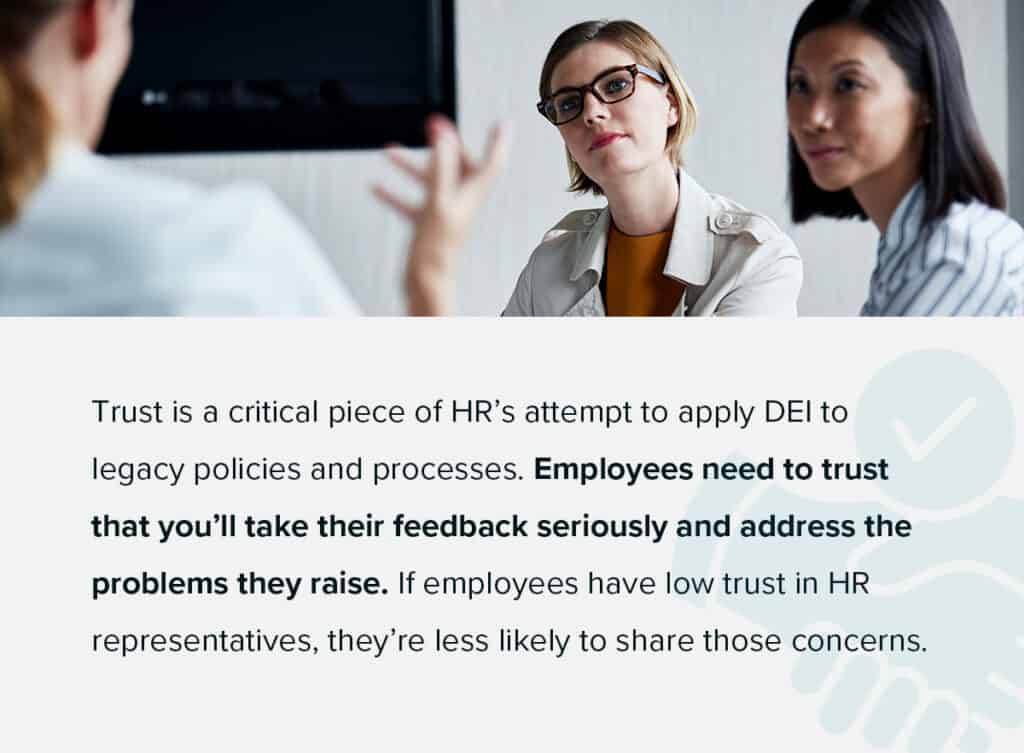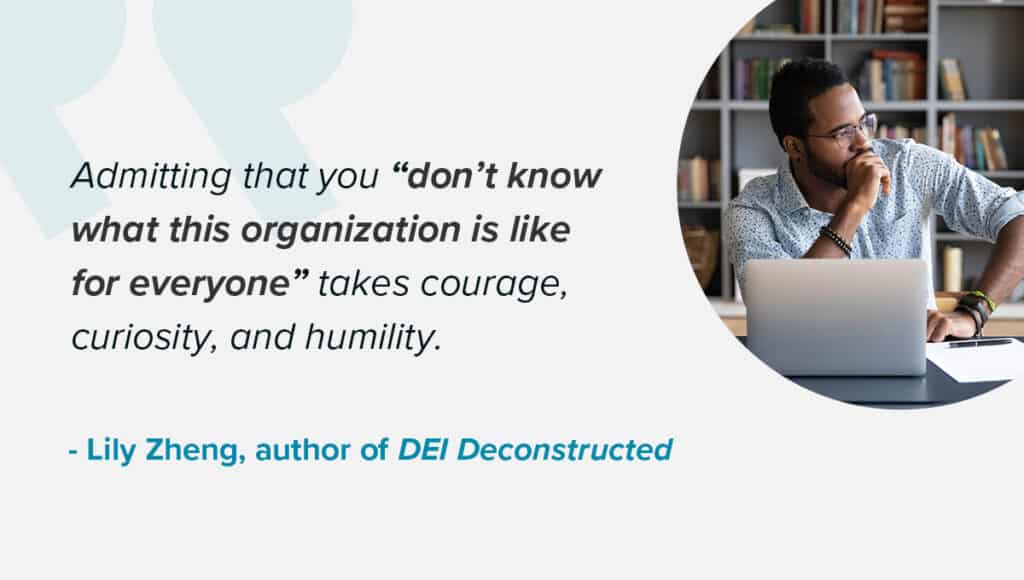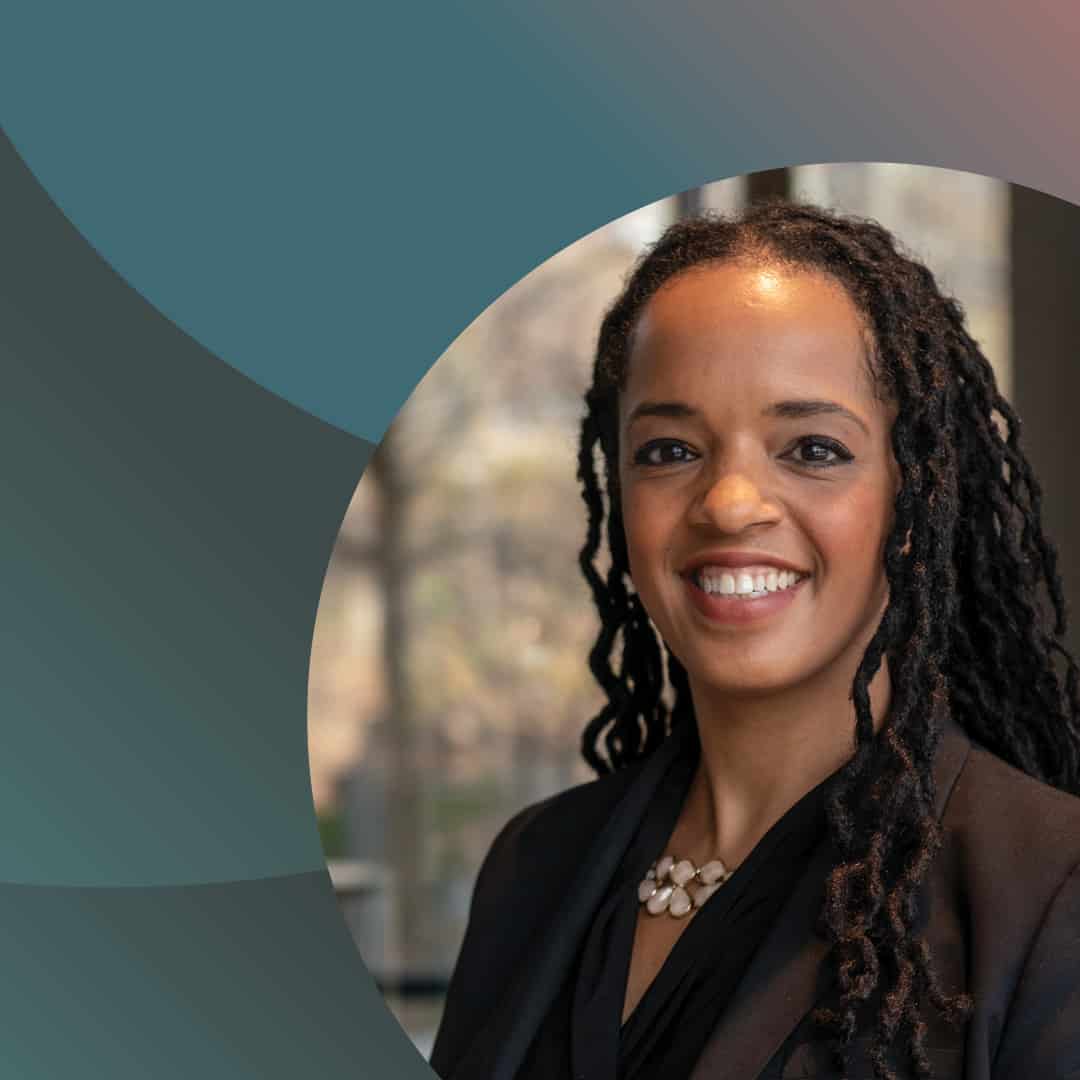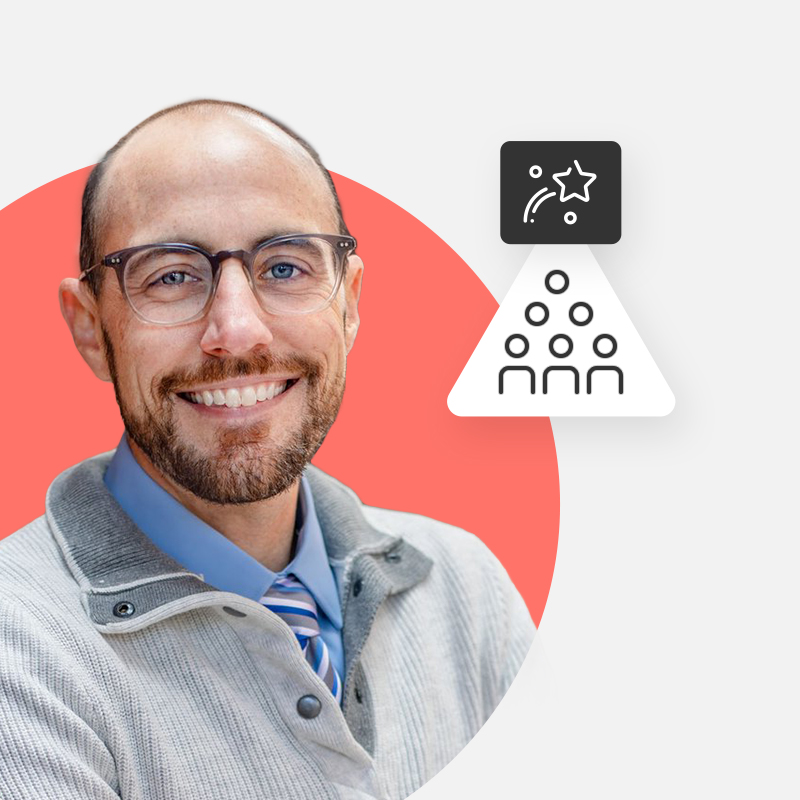HR’s biggest opportunity for supporting diversity, equity, and inclusion at work is also the biggest barrier: Rethinking institutionalized policies and practices.
“Measuring impact, especially measuring disparate impact of any policy or process or practice, is and should be the highest priority of HR working together with DEI,” says Lily Zheng, author of DEI Deconstructed. But it’s hard to know which policies are detrimental to your DEI efforts if employees don’t feel they can raise those concerns.
Trust is essential to creating psychological safety at work. Yet up to 70% of employees don’t trust leaders or HR, according to our 2023 State of Performance Enablement report. Why is trust absent? One major reason is the biases embedded in HR systems.
We spoke to Zheng about earning employee trust by reassessing HR policies through a DEI lens and why HR should approach legacy processes with curiosity and humility.

Overcome the ‘fear of finding out’
Every organization has legacy policies that might be exacerbating workforce problems. “Little disparities are exactly how inequity breeds and multiplies within organizations,” Zheng says. Until recently, for example, many companies had longstanding dress codes that were inherently discriminatory against traditionally Black hairstyles.
Leaders often suffer from what Zheng calls the “fear of finding out.” Admitting that you “don’t know what this organization is like for everyone” takes courage, curiosity, and humility, Zheng says.
When executives overcome this fear and audit legacy policies and processes for discrimination, they take the first step in creating change employees can believe in. By contrast, leaders who put off this task squander their workforce’s trust and deny themselves the chance to course-correct.
“If you do need help, you need to own up to it and embrace it,” Zheng says. “Being brave enough to ask that question of ‘where are we?’ — that’s what a lot of companies currently lack.”
After assessing your organization’s institutionalized bias, the next step is surveying employees for their perceptions of inclusion and how they experience your organization’s policies. Listen to their stories, and you’ll learn where you stand and how you can reimagine policies with equity in mind.

Assess the impact of inaction
Every HR team trying to address systemic problems with organizational policies and processes inevitably runs into constraints on their time and budget.
Without putting in the time, people turn to shortcuts. Speed is the antithesis of thoughtful inclusion work, Zheng says, because biases themselves act as heuristics to help us make speedy decisions.
That means “bias is institutionalized within the ways companies operate,” Zheng says. “And so long as that remains the case, DEI work is going to be Sisyphean: We’re always going to be pushing the boulder up the hill, and it’s always going to fall back down.”
Because of limited time and resources, organizational leaders are often hesitant to disrupt the status quo. But Zheng likes to flip the script, challenging leaders to prove the ROI on inaction. By doing nothing, you’ll find “you have low faith in corporate leaders, low trust, low perceptions of reliability.”
Your organization only stands to lose by letting legacy policies perpetuate institutional bias.

Question the status quo
Trust is a critical piece of HR’s attempt to apply DEI to legacy policies and processes. Employees need to trust that you’ll take their feedback seriously and address the problems they raise. If employees have low trust in HR representatives, they’re less likely to share those concerns.
When employees give feedback, you must investigate whether your policies or processes have unintended detrimental effects. “Unless we know that a policy or process is equitable by design and equitable in its outcomes, we should assume that it’s not,” Zheng says. “And that’s the opposite approach to what HR has assumed historically.”
Choosing to believe in your employees goes a long way toward creating a more inclusive workplace. When HR doesn’t take the initiative, by contrast, the burden of proof falls on workers, most of whom “don’t have the means, resources, or time to create a very coherent, eloquent case that a policy they know very little about is biased against them,” Zheng says.
“Unless we know that a policy or process is equitable by design and equitable in its outcomes, we should assume that it’s not. And that’s the opposite approach to what HR has assumed historically.”
— Lily Zheng, author of DEI Deconstructed
When employees don’t trust that their perspective will be taken seriously, they’re at a higher risk of disengaging or quitting.
Imagining something other than the status quote can be difficult, especially if you helped design these policies and processes. To gain employee trust, “approach your work with humility,” Zheng says.
Employees would rather hear you admit that you’ve fallen short on legacy practices than to hear you dismiss their experiences and pretend everything’s all right. View employee feedback, Zheng says, as an opportunity to assure employees how you’re going to make things better.
9 Diversity and Inclusion Strategies







